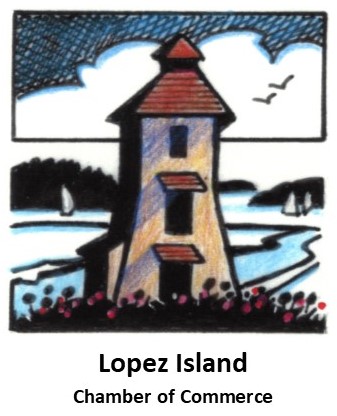Life at the Edges: a Guide to Exploring at Low Tide
The San Juans might be well known for charismatic megafauna like whales, foxes, and bald eagles, but there are creatures equally as fascinating waiting to be discovered. Peek beneath rocks, peer into tide pools, and wade into the shallow surf to find the unusual residents of the archipelago.
Tucked into rocky crevices, a single tide pool can hold more than a dozen species. Their appearances as varied as their habits, they depend on the whims of the tides for prey. But that’s what makes tide-pooling or looking underneath docks such a fun adventure, you just never know what you might see.
When the tide goes out, it reveals a hidden world not immediately visible otherwise. Below is a list of some common creatures you might encounter, recommendations for places to go, and what to bring and wear.

G = GENTLE touching. And clean fingers, please! Beach creatures would prefer you use just one wet, well-rinsed finger to explore with. If whatever you are examining appears to be stuck, don't try to pry it off.
U = USE your head - to measure rocks! Any rock you turn over on the beach should be no larger than what is between your ears. Turn gently.
E = EVERYTHING stays. Once you are done exploring under a rock, turn it back over carefully. Leave the beach at the beach.
S = STEP lightly! The beach is a wet and slippery place and falling on barnacles is...uncomfortable. You also don't want to miss - or squish - any of the cool critters by running past them too quickly!
T = TAKE your belongings. If you brought it with you, take it home. If you find something that does not belong on the beach, such as trash, be awesome and take that as well.
Our thanks to Harbor Wildwatch for these tips!
Wear waterproof footwear with good soles — the rocks can be slippery, and you’re bound to get your toes wet.
Speaking of getting wet: Bring extra clothes and towels, just in case.
Wear layers (another reason for those extra clothes). After all, it’s the Pacific Northwest! Who knows when the wind will pick up or the sun will disappear?
San Juan Island:
Cattle Point Natural Area: the rocks beneath the lighthouse are accessible by steep trails from the bluff, or from the beach to the left during low tide
Lime Kiln Point State Park: the rocks beneath the lighthouse can be reached at low tide, but not recommended for young children as the rocks are steep
Reuben Tarte County Park: the beach is easily accessible from the road, with rocky areas on the edges
Orcas Island:
Obstruction Pass State Park: easily accessible trail that leads to the beach; sloping beach makes for a good spot to look for creatures in the surf, with rocky areas nearby
Lopez Island:
Odlin County Park: the best family beach on Lopez
Lopez Village Beach: great place for crabs, squirting clams, sea stars, and anemones
Cool Creatures

You might be accustomed to calling them “starfish,” but the term is a misnomer — sea stars aren’t fish at all. They’re invertebrates with tough skin and soft undersides. Blood stars are bright red or orange and easy to spot, but keep a look out for ochre sea stars, too - they come in orange and purple.
Why they’re cool: Sea stars move around by using tiny suction-cupped tube feet — their suction is strong, so we recommend you don’t touch the underside of a sea star.

One of the most common creatures to spot at low tide is a sea anemone. You can find sea anemones on the sides of bigger rocks that are submerged during higher tides.
Why they’re cool: Sea anemones are related to jellyfish and coral. Sea anemones have stinging cells at the ends of their tentacles, called nematocysts, which they use to immobilize their prey. Human skin is too tough to be affected, so you can touch sea anemones in tide pools without concern. They’ll feel a little sticky, but won’t hurt. Just be gentle and try not to poke — they’re delicate!

Crabs are a crowd favorite with tide pool enthusiasts. The easiest place to find crabs is under rocks. Carefully lift a medium-size rock and watch the crabs scuttle into hiding. Look carefully and you’ll find red rock crabs, pygmy rock crabs, hermit crabs and others.
Why they’re cool: The claws. The side-scuttle. Need we say more?
Gently disturb the water in a deeper tide pool and you might spot a fish darting around. Common varieties include sculpins and gunnels. Sculpins have wide heads and tapered bodies, while gunnels are long and narrow and resemble eels.
Why they’re cool: Tide pool fish have excellent camouflage to blend in with their rocky gray-brown surroundings. It takes patience to spot them, but they’re worth it.

We all know barnacles as those hard, white bumps found all over beach rocks. Live barnacles have a round calcareous outer shell and internal plates that form a narrow slit. If you touch these plates gently, they’ll move as the creature inside closes them for protection.
Why they’re cool: This stationary animal, related to crabs and lobsters, may not seem exciting. However, when underwater, barnacles extend feather-like legs to catch plankton. So essentially, they're always standing on their heads!

If you spy a conical shell about the size of a quarter, it’s probably a limpet. Limpets can usually be found affixed to the sides of rocks, but unlike barnacles, they are not stationary. They’re actually a type of marine snail.
Why they’re cool: Limpets have a strong muscular foot that holds them to the rocks. In fact, the foot is so strong that limpets are able to create a seal against the rock to hold in moisture. This keeps them from drying out in the sun while the tide is out. It also keeps them safe from predators that try to pry them off.

Chitons are related to limpets, but instead of one single shell, they have eight protective plates. Chitons also have a strong foot that holds them to rocks. In addition to acting as a defense against predators, this ensures chitons don’t get knocked off their rocks by crashing waves. Tip: Say it like "KITE-en."
Why they’re cool: Chitons are living fossils! Fossil records show chitons existed more than 400 million years ago.

Okay, seaweed is a plant, not an animal, but it’s still worth a closer look! The easiest type to identify is bull kelp, due to its big, floating bulbs. Another common seaweed is rockweed, which has mitten-shaped bulbs that pop if you step on them. You can also easily find Turkish towel seaweed, which is red and bumpy. Big swaths of slippery green seaweed are likely to be sea lettuce. There are many, many varieties of seaweed: If you want to nerd out, the Seaweeds of the Pacific Northwest website provides a great overview.
Why it’s cool: Seaweed bulbs are called pneumatocysts and are filled with various types of gases. Underwater, these bulbs keep the leaves of seaweed close to the surface to absorb sunlight for photosynthesis.






